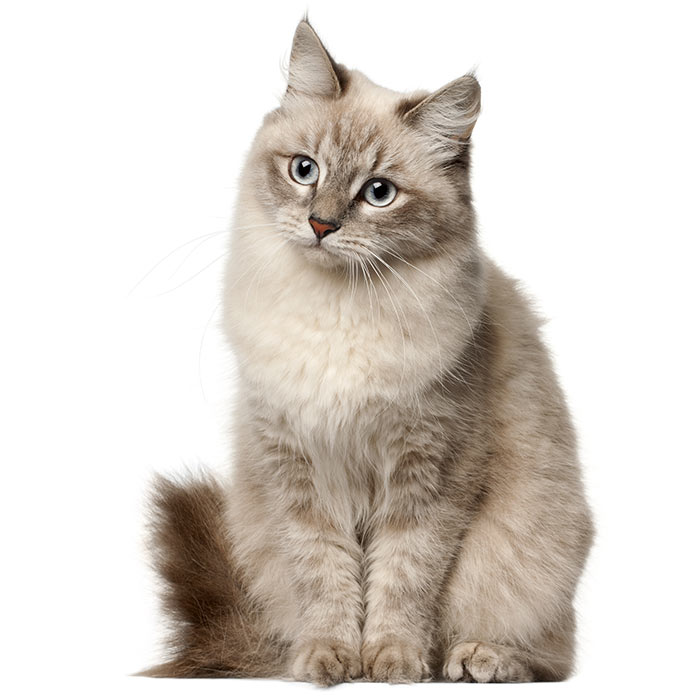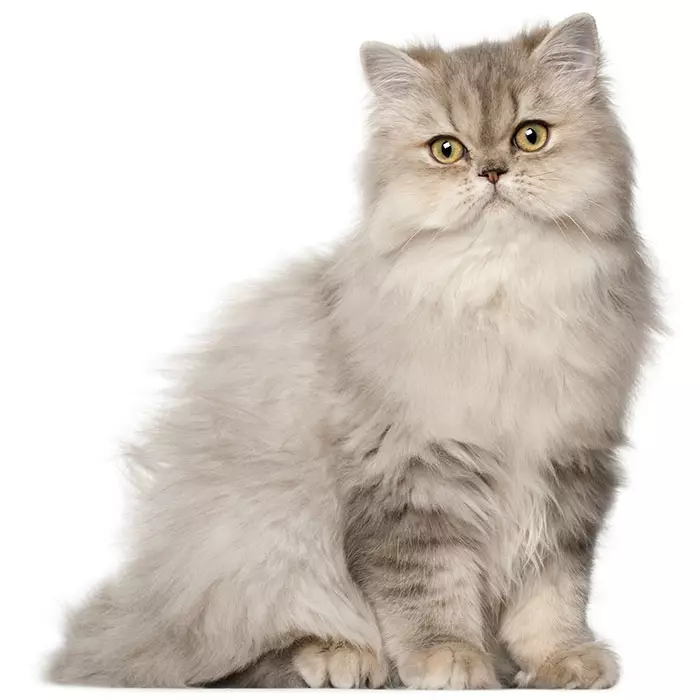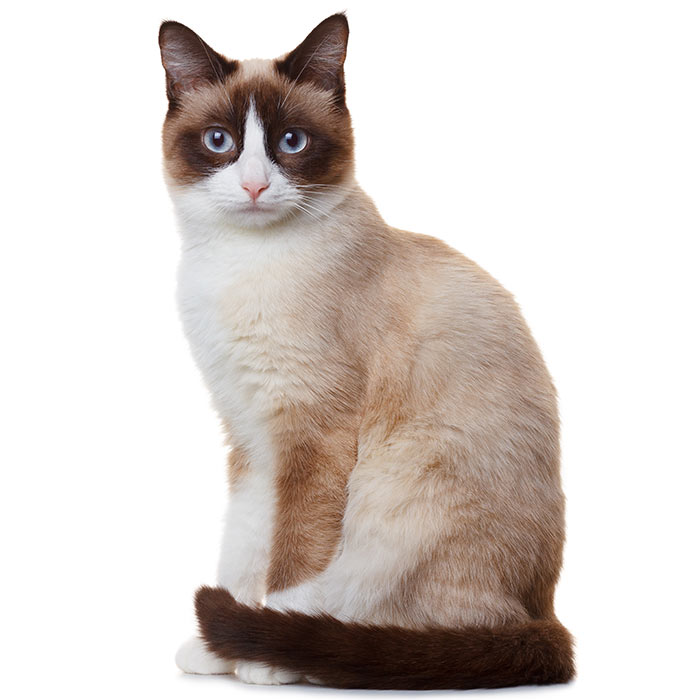Bengal
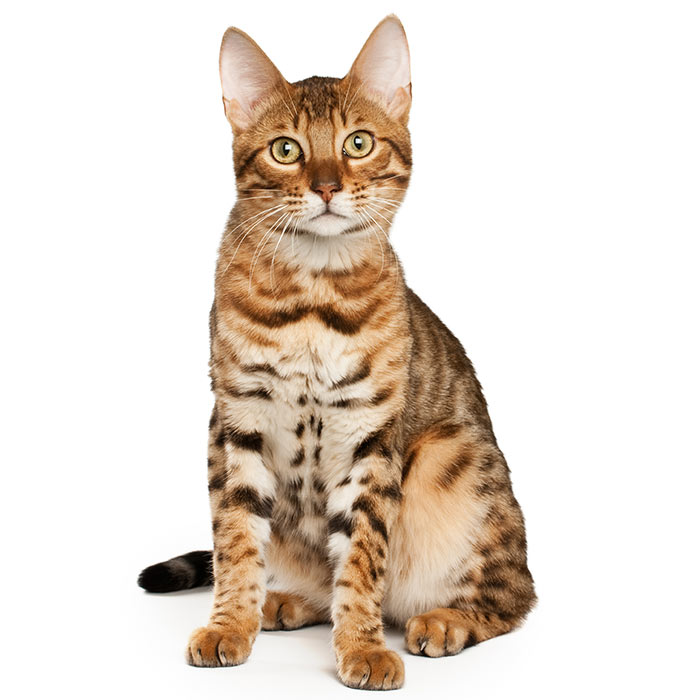

| Recommended for | Active families or individuals |
| Breed Classification | Hybrid / Shorthair |
| Other names | Leopard cat |
| Lifespan | 12 to 16 years |
| Size | Medium to large |
| Temperament | Affectionate, playful, independent |
| Intelligence | High; quick learners who enjoy interactive play, solving puzzles, and performing tricks |
| Tendency to vocalise | Moderate; will often chirp or meow when excited or to get attention |
| Maintenance Level | Moderate grooming needs, require plenty of exercise and mental stimulation |
| Health Risk | Generally healthy but does carry some moderate inherited health risks, especially Hypertrophic Cardiomyopathy and Progressive Retinal Atrophy. |
Insuring a Bengal?
Get our award-winning Nose-to-Tail Cover with up to $30k annual benefit limit, up to 90% of eligible vet bills back, and no sub-limits.
Get a quick quote
Is this breed right for you?
Try our breed selector quiz to find out your best matching breed!
Insuring a Bengal?
Get our award-winning Nose-to-Tail Cover with up to $30k annual benefit limit, up to 90% of eligible vet bills back, and no sub-limits.
Get a quick quote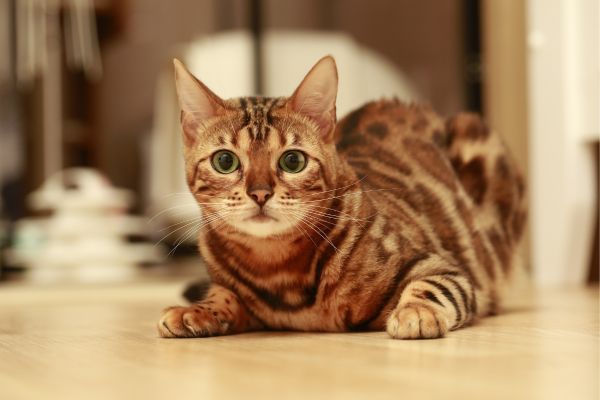
Breed history of Bengals
In the early 1960’s, Asian Leopard Cats, small wildcats native to the forests of Asia, were imported to the United States, largely due to consumer interest and their beautiful, spotted coats. The problem though, was that these cats didn’t make great pets, and most of them escaped their homes or were given to the local zoo.
Jean S Mill, one of the original founders of the Bengal breed, wanted to combine the exotic look of wildcats with the gentle temperament of domestic cats, so that people would be less inclined to purchase wildcats as pets and to wear their fur, which was fashionable at the time (and hence resulted the deaths of many adult Asian Leopard Cats). Mill’s first Asian Leopard Cat bred accidently with a domestic black tomcat, creating the first Bengal, a hybrid female called Kin Kin.
Meanwhile, in the 1970’s, there was an epidemic of feline leukemia among domestic cats. Around this time, it was discovered that most wildcats had a natural immunity to this illness, as well as other feline diseases. This led Dr. Willard Centerwall from Loyola University to begin breeding Asian Leopard Cats with domestic cats in order to see if the Leopard Cat’s immunity could be passed on to hybrid offspring.
After this study, Jean Mill acquired some of Centerwall’s kittens and continued attempting to refine the breed. Only females are fertile for the first few generations of Bengals, so Mills had to find suitable domestic male cats to mate with the female cats. She settled on a calm and compassionate tabby from a local shelter and a shorthair cat with a Bengal-like appearance that she imported from India. The resulting litters served as the foundation of the modern Bengal cat.
Other short haired breeds such as Abyssinian, Burmese and Egyptian Mau were also used in the early breeding programs so the Bengal has a diverse background with a good sized gene pool. Modern Bengal cats are bred exclusively from Bengal-to-Bengal pairings and most breeders offer Bengal cats that are at least six generations removed from the Asian Leopard Cat.
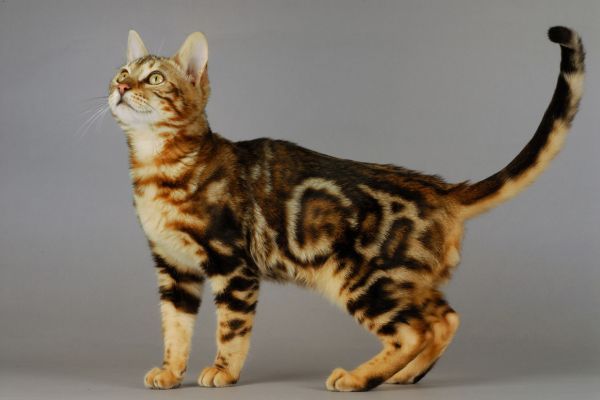
Physical description of Bengals
Bengals are, medium to large-sized cats with a long, lean body, a strong, athletic build and a graceful stance. They have striking, almond-shaped eyes that are typically green or gold, but can also be blue. Their ears are medium-sized and pointed, and their long, thick tail is moderately tapered.
One of the most distinctive features of the Bengal is its stunning, soft, sleek coat which has two main fur patterns: spotted (which is most common), and marbled. Both patterns are often tri-coloured, giving each cat unique markings and patterns. This tri-colouring gives some Bengals dramatic rosettes with dark outlines, often resembling the spots on a leopard or jaguar. Both spotted and marbled Bengals are available in a variety of colours, the most common of which are brown, snow, silver and blue, though chocolate, charcoal and cinnamon have become more popular in recent times.
Many Bengals also have a unique “glitter” gene, which gives their fur a shimmering, iridescent sparkle, making them look like they’ve been dusted with gold in the sunlight. Bengals also tend to have white (or light) tummies similar to wild cats.
| Weight range | Males: 4.5 to 6.5 kg; females: 3.5 to 5.5 kg |
| Height range | 25 to 33 cm (10 to 13 inches) at the shoulder |
| Colours | Brown is the most popular, also snow, silver and blue |
| Coat length | Short |
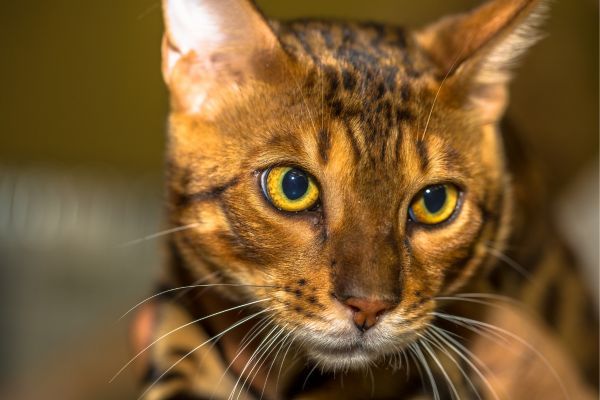
Bengal personality and temperament
Bengal cats are energetic, playful, and intelligent. They enjoy spending time with their families and form strong bonds, but are also independent. While they love attention, they are not lapcats and are content to entertain themselves when needed.
Curious, confident and adventurous, Bengals often seeking out new things to explore or interact with. They are very energetic and love to play games and hunt, and require lots of play time to keep their minds and bodies occupied. Unlike most cats, Bengals are fascinated by water – they often enjoy playing in sinks and bathtubs, and may even take a swim or join their owners in the shower!
Bengals are content as indoor cats, particularly in homes that provide sufficient attention and enrichment for their highly intelligent and energetic natures. They need plenty of space to explore and climb, so vertical spaces like cat trees or shelves are essential in an apartment setting. If allowed outdoors, they should be supervised or provided with a secure outdoor enclosure to ensure their safety.
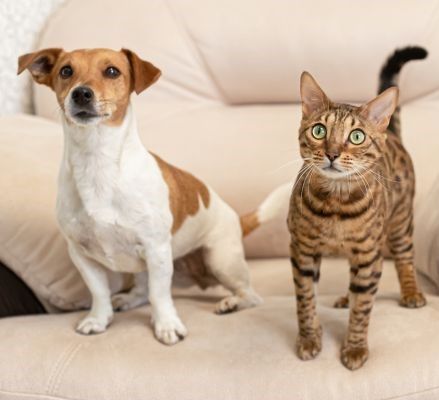
Bengals with kids and other pets
Bengals are good with children, especially those who know how to interact gently with them, and enjoy being an active part of family life. Their friendly nature makes them great companions for families.
Bengal cats can get along well with other pets, but their success depends on socialisation, individual temperament, and the type of pet. They are generally are confident, curious, and social, which matches well with active and friendly dogs. In fact, Bengals often enjoy playing chase and may even bond closely with a canine companion. When it comes to other cats, they are territorial and can be dominant, especially with timid or older cats. They are best paired with another active, confident breed or a cat raised with them. Bengals have strong hunting instincts, so small animals should always be kept secure and out of reach.
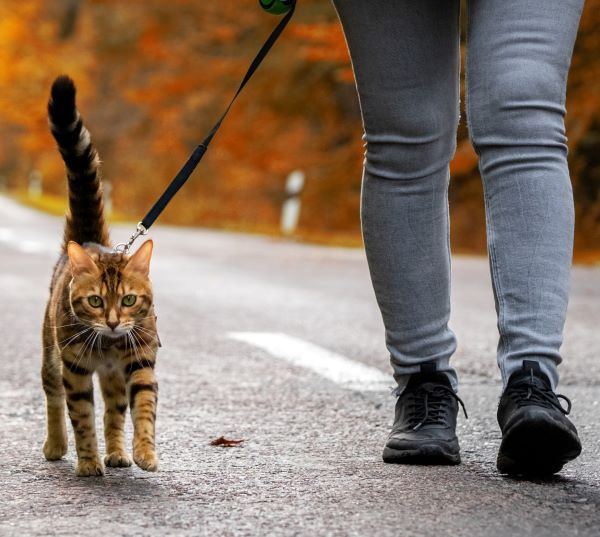
Bengal training and exercise
Bengal cats are ideal for active families or individuals and thrive in homes where they can interact with their humans and receive plenty of stimulation. They have high energy levels and need regular exercise and mental challenges to stay mentally and physically engaged. They love interactive play, climbing, and exploring, so daily play sessions and access to climbing spaces like cat trees are essential to keep them active and happy, as are toys such as feather wands, laser pointers, and puzzle feeders.
Bengals love to learn tricks and can be trained to sit, stay, and fetch, and even enjoy walking on a leash. Unlike most cats, Bengals are quite easy to leash-train, which allows owners to take Bengal for walks and to explore the great outdoors in safe way.
| Energy level | High |
| Exercise requirements | Plenty of mental and physical stimulation, including games, puzzles & climbing structures |
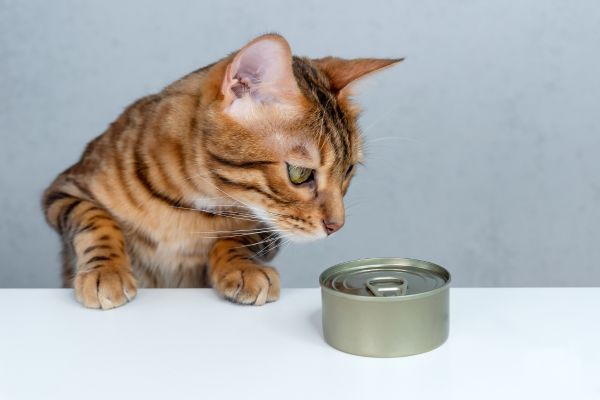
Bengal feeding and nutrition
The Bengal thrives on a balanced diet that supports its active and energetic nature. High-quality, protein-rich food is essential for this breed to maintain muscle mass and overall health. A combination of wet and dry food is recommended to ensure proper hydration and digestive health. Look for food that contains essential fatty acids, vitamins, and minerals to support their coat and general well-being.
Portion control is important to avoid overfeeding, as Bengals tend to have a healthy appetite. Divide their food intake into two or three meals a day to maintain a healthy weight. Always provide fresh water, and consult your vet for dietary recommendations based on your Bengal’s age, activity level, and health. Note that Bengals are commonly misdiagnosed with Intestinal Bowel Disease. An appropriate high protein diet and proper testing for parasites can help clear any real issues.
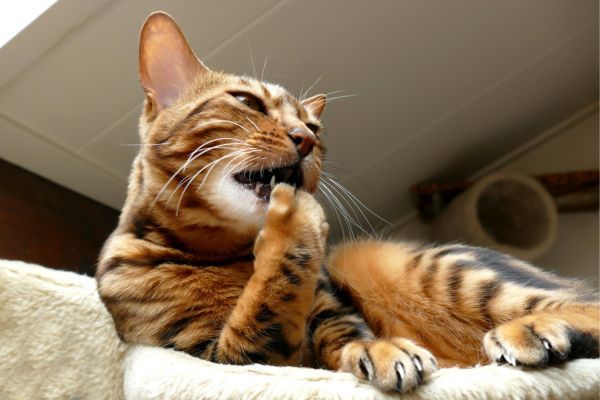
Bengal care and grooming
The Bengal has a short, dense coat that is relatively low-maintenance. Regular brushing once or twice a week is recommended to remove loose hairs and reduce shedding. While Bengals don’t require frequent baths, occasional bathing can help maintain their coat’s shine and smooth texture. Regular ear cleaning and nail trimming should be part of the grooming routine, and dental care, including teeth brushing, is also important for their health.
Bengals are tolerant of moderate climates but should be protected from extreme weather conditions. Their short, dense coat provides some protection, but they are best suited to temperate climates. In hot or cold weather, they should be kept indoors to ensure their comfort and safety.
Bengal cats are not hypoallergenic, but they are often a good choice for people with mild to moderate cat allergies due to their coat type and lower dander (note that no cat is 100% hypoallergenic, including the Bengal).
Health issues for Bengals
- Hypertrophic Cardiomyopathy (HCM) is a heart condition that causes thickening of the heart muscle, making it harder for the heart to pump blood. Bengals are more prone to this condition, which can lead to heart failure if not managed. Regular vet check-ups and heart screenings are essential for early detection.
- Progressive Retinal Atrophy (PRA) is a genetic condition that leads to the degeneration of the retina, causing progressive vision loss and potential blindness. While not common, it remains a concern for Bengals. Symptoms may include night blindness and dilated pupils, so regular eye exams are recommended.
- Cataracts are films that form on the lens of the eyes and they can slowly turn the lens opaque instead of clear, causing vision loss and eventually blindness. Cataracts can be surgically removed.
- Chronic Renal Failure (CRF) is a kidney condition which essentially means that the kidneys are failing. It is recommended that after your Bengal reaches the age of seven, you should take them in to see the vet to be tested for CRF on a yearly basis. Your vet will perform both blood and urine tests in order to detect this disease.
- Patella luxation is a joint issue in which the knee joint falls in and out of place. Cats affected with a mild case will benefit from losing some weight in order to take away some of the strain on the joints. Surgery is available in severe cases.
- Dental Disease, particularly gingivitis and periodontal disease, can affect Bengals. Regular teeth brushing and dental check-ups are recommended to prevent dental issues and maintain overall oral health.
Not all conditions are covered by Pet Insurance. For details of Bow Wow Meow Pet Insurance cover, refer to the Product Disclosure Statement.
Thinking about insuring a Bengal
Thinking about insuring a Bengal
Learn moreThinking about insuring a Bengal
Learn moreFree engraved pet ID tag on sign up3
Customer Satisfaction
21 day cooling off
Easy to use Pet Portal

GapOnly® in vet claims
MORE INFORMATION
The Bengal Cat Club UK: http://www.thebengalcatclub.com/
The Bengal Cat Club USA: https://bengalcatclub.com/


